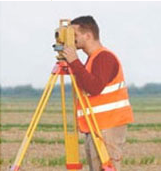HOW DO I CHOOSE A LAND SURVEYOR?
WHAT IS AN EASEMENT?
Easements are specific to the use of the parties mentioned in an easement, and are limited to the use cited. A private water line easement can not be used for public water main, and an access easement can not be used for utilities. There are many different types of easements and the laws that govern them. To find out more about an easement which affects your property you’ll need to consult the documentation which created the easement such as your deed or record plat.
WHAT IS ADVERSE POSSESSION?
WHAT IS AN ENCROACHMENT?
WHEN SHOULD I HAVE MY PROPERTY SURVEYED?
WHAT IS THE DIFFERENCE BETWEEN A LOCATION DRAWING AND A BOUNDRY SURVEY?
A Boundary Survey is for the express purpose of locating or establishing property corners and property lines of a given parcel of land. This involves thorough research of both public and private records, field research, measurements and computations. Establishing boundary lines is not only a specific process, but a legal process as well. The surveyor must consider the legal implications of conflicting boundary lines, vague deed descriptions, encroachments, prescriptive easements, adverse possession and erroneous property markers.
HOW MUCH SHOULD A BOUNDRY SURVEY COST?
• Complexity of legal records; the number of deeds that need to be researched are often complicated by vague, incomplete and contradictory wording.
• Size and Shape; an irregular shape has more corners and the larger the property the longer it takes to work around it.
IS THE PRICE ALONE SUFFICIENT?
WHY DO SURVEYORS DIFFER?
According to Maryland law, a surveyor must use the original property markers when performing a boundary survey. As time progresses the original markers get lost or destroyed by


Member of the Maryland Society of Surveyors.
Chairman of the Howard County Chapter of the Maryland Society of Surveyors.
